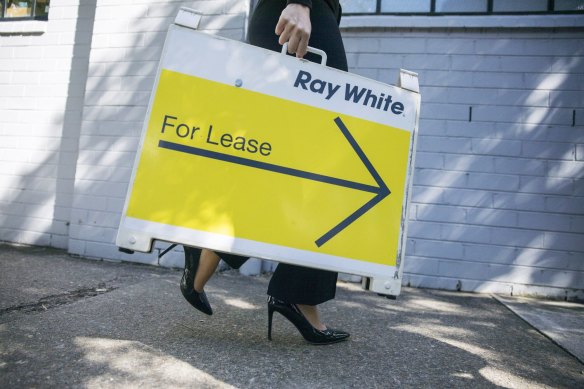Inflation numbers take pressure off Reserve Bank for rate rise
Home owners may have avoided an August interest rate rise after inflation figures released Wednesday morning showed price pressures in line with Reserve Bank forecasts.

The Australian Bureau of Statistics reported that headline inflation increased by a full percentage point in the June quarter, taking the annual rate of inflation to 3.8 per cent.
A further lift in rents was not enough to push the latest measure of inflation above the Reserve Bank’s expectations.
The closely watched underlying measure of inflation rose by 0.8 per cent in the quarter, pulling the annual rate down to 3.9 per cent. It was the sixth consecutive quarterly fall in this measure.
In another positive sign, the bureau’s monthly measure of inflation also eased, from 4 per cent in the 12 months to May to 3.8 per cent for the year to June.
The bureau’s head of prices statistics, Michelle Marquardt, said rents – which climbed by 2 per cent – and the cost of new dwellings were the main drivers of inflation through the quarter.
Loading
“The continuing tight rental market and low vacancy rates caused rental prices to go up 2 per cent for the quarter, following a 2.1 per cent rise in the March 2024 quarter,” she said.
The supermarket was more expensive for most people with food and non-alcoholic beverages up by 1.2 per cent in the quarter to be up 3.3 per cent over the year. Despite the increase, it was the sixth consecutive quarterly fall in food inflation which had peaked at 9.2 per cent in December 2022.
Fruit and vegetable prices rose by 6.3 per cent, meat and seafood were up by 1.3 per cent while meals out of the home increased by 0.6 per cent.
“Fruit and vegetable prices rose this quarter as unfavourable growing conditions drove higher prices for grapes, strawberries, blueberries, tomatoes and capsicums. This was the highest quarterly rise for fruit and vegetables since 2016,” Marquardt said.
Electricity prices increased by 2.1 per cent in the quarter to be 6 per cent up over the year. These have been affected by the federal government’s energy bill relief fund.
Without that fund, the bureau estimates electricity prices would have climbed by 14.6 per cent over the past year.
Insurance prices continue to climb, but they are starting to slow down. The annual increase was 16.4 per cent in the year to March but fell to a still high 14 per cent in the year to June. The bureau said high reinsurance costs, natural disasters and claims costs continue to put upward pressure on premiums.
Across the capital cities, inflation is running fastest in Perth (4.6 per cent) and Adelaide (4.5 per cent). Prices have climbed by 3.8 per cent in Sydney and by 3.7 per cent in Melbourne over the past year.
Hobart has the lowest inflation rate in the country at just 2.7 per cent.
Loading
The Reserve Bank, which holds its two-day meeting on Monday and Tuesday, had forecast both the headline inflation and the trimmed measure to be at 3.8 per cent in the June quarter.
Before the figures, financial markets had put the chance of an interest rate rise next week at one in four.
Deloitte Access Economics partner Stephen Smith said the RBA was unlikely to lift interest rates given the figures.
“Today’s June quarter CPI data should put to rest the tired notion that the RBA should lift rates, an act that would do nothing but tempt a recession,” he said.
“What we have seen today is confirmation that inflation and inflationary expectations are not running rampant. If anyone has any doubts about inflation’s downward trend, today’s figures show that annual core inflation has fallen for its sixth consecutive quarter and has reached its lowest rate in two years.”
Cut through the noise of federal politics with news, views and expert analysis. Subscribers can sign up to our weekly Inside Politics newsletter.
Loading






















